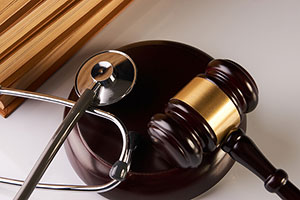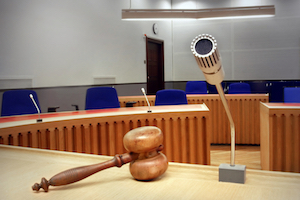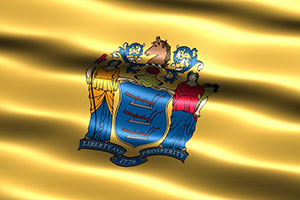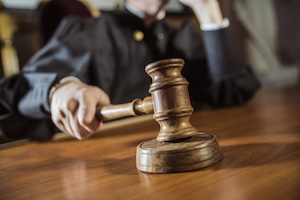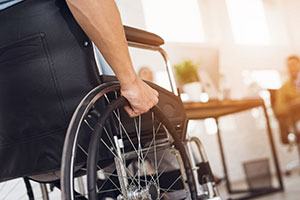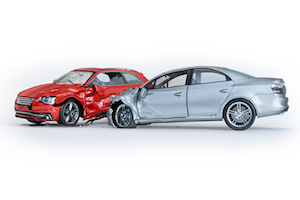A Texas jury found that Bell Helicopters was grossly negligent in exposing an engineer to asbestos and that the exposure caused the engineer’s mesothelioma. An appellate court reversed the judgment after concluding that the testimony of an expert witness failed to establish Bell’s gross negligence.
Facts of the Case
Bell Helicopters employed Billy Dickson for six years as an engineer. Years after he left that employment, Dickson was diagnosed with mesothelioma, a disease that is caused by exposure to asbestos. Dickson did not work directly with asbestos in his employment with Bell, but he supervised workers who did.
Dickson brought a products liability claim against several defendants. He later added Bell as a defendant. Dickson died before the case went to trial.
Dickson’s estate settled its claims against some of the defendants. Other defendants were dismissed. Bell was the only remaining defendant when the case went to trial.
Because workplace exposure claims are generally preempted by Texas workers’ compensation law, the only surviving legal theory was whether Dickson’s estate was entitled to punitive damages because of Bell’s gross negligence. The estate relied on expert testimony to prove its claim.
Expert Evidence
Dr. Edwin Holstein is a specialist in internal and preventative medicine. He has a subspecialty in occupational medicine. He has taught other doctors about the health impact of asbestos exposure.
Dr. Holstein testified that bystanders can be exposed to asbestos even if they do not handle the asbestos. Union rules prevented Dickson from touching tools, but he stood within a few feet of employees while they were erecting wall panels to insulate testing areas from heat. The panels were made from millboard.
Dr. Holstein reviewed Dickson’s deposition testimony. Dickson testified that he was present when millboard was cut to make heat-resistant walls. Dickson believed the millboard contained asbestos that was released into the air when the millboard was cut. He described his exposures to asbestos as intermittent but intense.
It was Dr. Holstein’s impression that Dickson was exposed to asbestos when the millboard was cut. He acknowledged, however, that he did not know who manufactured the specific millboard that was used and did not know the specific amount of asbestos that it contained. He testified that he based his opinion on four studies regarding the air concentration of asbestos caused by the cutting of millboard.
Dr. Holstein opined that Dickson’s asbestos exposure at Bell more than doubled his risk of acquiring mesothelioma. He also testified that laws enacted before Dickson’s employment limited the amount of allowable airborne asbestos in a work environment and that the link between asbestos and mesothelioma was well established before Dickson worked at Bell.
Appellate Analysis
Texas law does not permit an award of punitive damages for an employer’s gross negligence unless the objective evidence establishes that the employer’s conduct created an extreme risk of harm. An extreme risk is one that is likely to cause a serious injury. A plaintiff must also prove that the employer was subjectively aware of that risk but was indifferent to the safety of its employees.
There is no doubt that mesothelioma is a serious injury. The question before the Court of Appeals was whether the evidence established that Bell’s conduct made it likely that Dickson would acquire mesothelioma and whether Bell was aware of that risk.
Dr. Holstein relied on Dickson’s deposition testimony, but Dickson testified that he did not know who manufactured the millboard and that he only learned recently that the appearance of the millboard was consistent with a product containing asbestos fibers. Dr. Holstein inferred that the millboard contained asbestos based on that testimony and on his knowledge that millboard was a standard product produced by only a few manufacturers. He also knew from studies that the millboard in use at that time contained asbestos.
The Court of Appeals concluded that Dr. Holstein’s testimony fell short of establishing the existence of an extreme risk. While Dr. Holstein testified that the dangers of asbestos were widely known before Dickson’s employment, he offered no evidence that Bell knew the millboard contained asbestos.
Since Dickson himself had no knowledge at the time that the millboard contained asbestos, the court concluded that Bell’s generalized knowledge that asbestos is hazardous was insufficient to establish its knowledge that cutting millboard created an extreme risk of harm to bystanders. One could argue that Bell should have known the millboard contained asbestos since Bell was using the millboard for its heat-resistant properties, but the question was what Bell subjectively knew, not what it should have known.
Moreover, the studies that Dr. Holstein relied upon to estimate Dickson’s asbestos exposure were all created after Dickson’s employment ended. Bell’s awareness of an extreme risk depended on its knowledge at the time Dickson was exposed to that risk. Dr. Holstein’s testimony did not establish that Bell had any subjective awareness during Dickson’s employment that his proximity to millboard cutting exposed him to the risk of acquiring mesothelioma.
If this case had involved ordinary negligence rather than gross negligence, the outcome might have been different. An ordinary negligence standard would ask what an ordinarily prudent company should have known, not what it actually knew. Given the definition of gross negligence in Texas law, Dr. Holstein’s expert testimony fell short of proving that Bell’s gross negligence caused Dickson’s mesothelioma.
It is doubtful that any expert testimony could have done so, as the knowledge possessed by Bell would typically be proved through documents or testimony that revealed what Bell actually knew about the dangers of cutting millboard and when it first acquired that knowledge. The lesson to be learned is that expert testimony can be relied upon to prove facts that are within the expert’s knowledge, but facts regarding the subjective knowledge of another person or business usually need to be proved through fact witnesses or documents.



